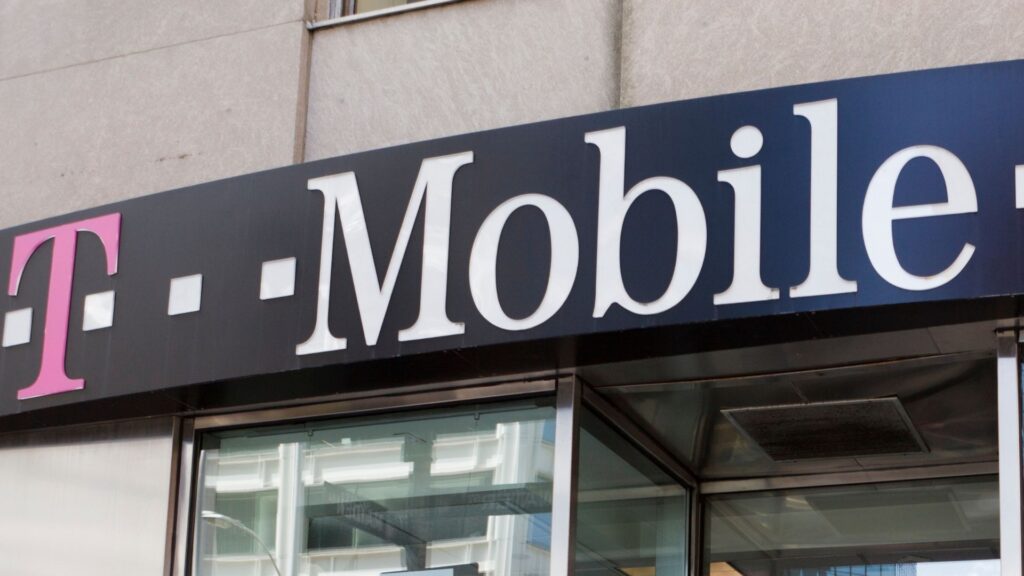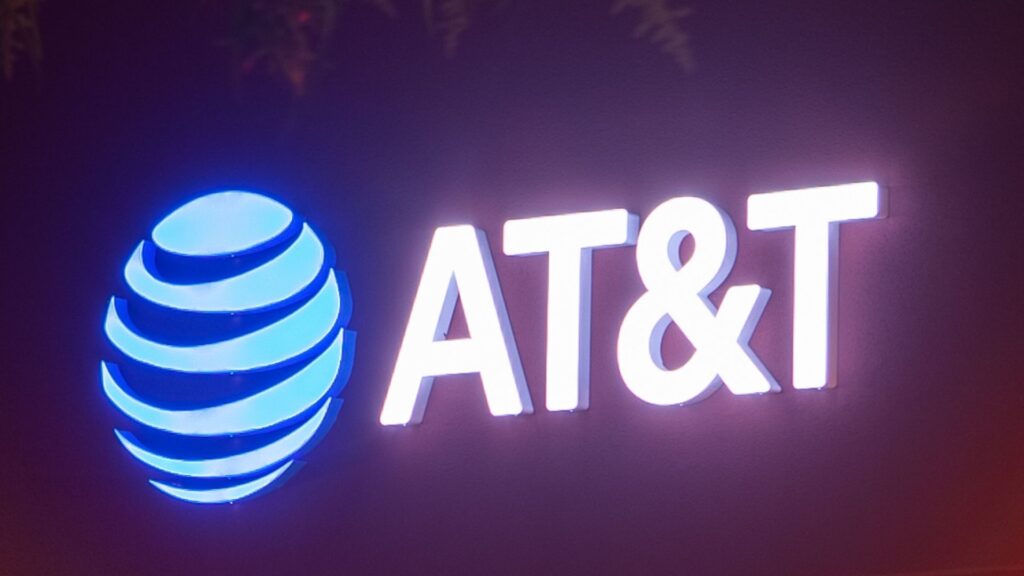It is 2022! The year that 5g will finally be worth caring about.
This post is to give you an update on the state of 5g network deployments, 5g devices, and 5g data plans, as of late February 2022.
The state of 5g cellular fifth-generation cellular is the next big thing over 4g LTE and behind the scenes, there is a lot of new technology. A lot of raw tech advancements have happened as 4g radios have evolved to be 5g radios. With all this excitement about 5g the actual rollout has been a slow gradual process. Even though all the carriers have been trumpeting their 5g networks (for up to two years or even longer) we are now in the year 2022 so let’s see where we stand. The industry is hitting an inflection point in the transition to 5g. Some carriers are moving a lot faster into the 5g future than others, so let’s deep dive into where we are by checking in on the status of the carriers starting with T-Mobile.

T-Mobile is the shade of pink worth noticing!
Surprisingly, T-Mobile is the 5g leader! They invested early on in the 600-megahertz spectrum and are utilizing their long-range band 71. When they purchased band 71 the idea was to expand their LTE network (to have bigger broader nationwide coverage) instead they set aside a lot of it to be ready for 5g. Waiting to deploy has allowed T-Mobile to jump ahead early in having a more complete 5g nationwide coverage. T-Mobile claims over 300 million people (the bulk of the US population) is now in an area that has 5g long-range coverage from T-Mobile. They are way ahead in their 5g coverage map vs other carriers. That lead is due to long-range bands, located in the 600-megahertz frequency. However, it doesn’t really give you much of a next-generation 5g experience. It’s more like excellent 4g for the average user. However, T-Mobile’s spent a fortune buying sprint. By merging with sprint, it allowed T-Mobile to acquire sprint’s band 41. This mid-band spectrum is the goldilocks spectrum for 5g. It is super-fast, not crazy fast like millimeter wave, but provides excellent speed over a decent distance. Not super long-range, it’s kind of that sweet spot in between, and taking over sprint and all its unused spectrum that sprint had gives T-Mobile plenty of opportunities to capitalize on its lead.
T-Mobile has been able to start rolling out mid-band 5g in what they’re calling “ultra-capacity” over a very substantial part of the country. T-Mobile has been ramping up a lot over the past year and that puts T-Mobile ahead of the other carriers both in long-range as well as next-generation speed. The Big T makes it super easy to have a T-Mobile 5g device. If you’re thinking about T-Mobile, it makes sense to have 5g on T-Mobile. T-Mobile has a lot of places where you’ll find access to ultra-capacity, and you should see 100-200 megabits or even 500-600 megabits per second speeds. That’s some truly next-generation speeds on the road or in a local coffee shop. T-Mobile is also leading the industry by being the first to turn on 5g carrier aggregation. This means you can combine those low band and mid-band spectrum for the best of both worlds over more long-range situations. As more speed is turned on for the network, it’s going to matter a lot more later in 2022 and into 2023.

Verizon – The Red Embarrassed Second Place
Next up is Verizon, you know Verizon if ranked on a chart would be second place in 5g. Verizon’s focus on 5g, in the beginning, revolved around millimeter wave deployments. Millimeter-Wave is that super short-range, but incredibly fast multi-gigabit per second speed. The 5g deployments that Verizon has been putting up have been focusing on stadiums, conference centers, airports, and streetlight poles. They also have been pushing to deploy in downtown core urban areas in a few major cities. This focus on Millimeter-wave is not able to provide coverage in the places Road warriors and people on trains are likely to go, but it does make for a great show to your friends (when you see the 5g signal on Verizon). However, compared to its competitors, it’s been embarrassing for Verizon. As far as most of the places people go, Verizon’s nationwide 5g rollout is nowhere near the coverage of T-Mobile and it is just a tiny layer on top of Verizon’s 4g network. Verizon’s nationwide 5g is really nothing other than a 5g icon up in the corner of your phone. It is really nothing to write home about.
Verizon has had enough of being left behind and is changing as we head into 2022. Verizon spent big and finally has mid-band spectrum to deploy. This is the c-band spectrum that had some brouhaha with the FCC and the FAA fighting over potential issues with air aviation safety that delayed the rollout of the c-band for a while. As of late January 2022, Verizon was able to flip the switch and turn on c-band band n77 for 5g across a substantial part of the country. They are turning on more and more towers with this band which gives them a next-generation network that’s now starting to compete with T-Mobile’s ultra-capacity. Verizon’s calling it their ultra-wideband network, this is starting to be seen by people reporting speeds that are really next generation (gigabit or more). With c-band, the catch is not a lot of the early generation of 5g devices support band 77. So when out shopping, you must double-check all your devices for band compatibility to make sure you have that band and that Verizon is supporting it. This band deployment is still rolling out so it’s an exciting year ahead for Verizon as they start flipping this on. If you are on the Verizon network or if you are considering the Verizon network, it is now time to start thinking of taking 5g devices a lot more seriously.

Next up is AT&T: The Big Blue Monster.
At&t, the blue carrier when it comes to rolling out 5g, is just like Verizon. Att has had a little bit of millimeter-wave in a few cities but not nearly as much as Verizon has rolled out. Like Verizon, they’ve done a nationwide layer on top of 4g just to have 5g show up in the corner of phones. Att’s 5g, in some cases, is even worse performing than their 4g network. In fact, Att has almost got a reputation of getting better performance by turning off 5g. By doing so, you can fully tap into 4g carrier aggregation. Because their nationwide 5g layer is just a teeny tiny little channel set aside. Att does this to make you think you have 5g by showing the connection as 5Ge.
So where is at&t’s real broadband next-generation network?
Before that question can be answered you must be made aware of some recent moves by Att. Att purchased a lot of c-band spectrum and just like Verizon was in a legal fight with the FCC and FAA until it became legal to operate in that spectrum in January 2022. Att then turned it on (just like Verizon) but limited itself, unlike Verizon. The spectrum ATT turned on was in tiny parts of their footprint. In less than eight or nine cities, it’s barely been detected anywhere in the country. Why is att sitting still and not deploying all the c ban they spent money on? There are two reasons: One is that a lot of the c-band that Att acquired is actually not going to be available for deployment until 2023! It’s speculated that it is even slated for late 2023. As of now, a lot of that spectrum is just waiting in the wings, it’s not ready to be turned on as the current tenants haven’t moved out yet. Att has spent big on another fcc auction which concluded in January that contained another section of the c-band spectrum. This c-band spectrum is a lower section of the c-band spectrum that some analysts have started dubbing the “andromeda spectrum”. Att led the buying in the auction, buying that spectrum, and the good news is that spectrum is available for use immediately.
Now that Att owns that low band c-band, they need the cell tower gear that can take advantage of the andromeda spectrum. The gear is not slated to be available for deployment until the summer of 2022. Att has been out telling analysts that they don’t want to go climb all their towers twice to upgrade once for the c band. They don’t want to roll out techs again in the summer to add the andromeda spectrum. So they are waiting, by intentionally putting their foot on the brakes. As far as their 5g network roll-out goes, until they can climb all their towers just once. They plan do not expect to turn on the new c-band until 2023 or 2024. They still have their nationwide “5g” but for the most part, At&t’s network is nothing to be excited about just yet. Something to keep in mind is that this andromeda spectrum is so brand new, there’s no certainty of what devices will be upgraded to be compatible. It is still “technically” band n77 but Att representatives have been saying that a lot of the pre-2022 phones and devices will not be andromeda compatible. That said, if Att 5g is important to you, put on the brakes until devices will be andromeda compatible.

The Dark Horse Rises
That is the update on the status of the big 3 carriers and their network deployments. There is a dark horse carrier that you might be wondering about, the Dish network. When the federal government allowed T-Mobile and sprint to merge; they set in motion the means to have a new fourth nationwide carrier. Dish network has been making noise for a while about their “project genesis”. Dish Network has been saying that they are going to be the first 5g native next-generation network to deploy in the country because they have no legacy baggage of 4g. They claim to be able to do cool and innovative new things and have been teasing marketing fluff about project genesis for a while. But like most easily consumed fluff they really do not have much to show for it, yet. Later in 2022, we might see genesis start to show its stuff. Just this week they sent out an update saying project genesis is about to launch in one city (las Vegas) so maybe we’ll see genesis be a new fourth nationwide 5g network.
5g Hardware and access to that sweet Internet-only Data plans
When it comes to 5g hardware for people who are interested in data-only connections we are starting to see hotspots and cellular routers equipped increasingly with 5g compatible chipsets. In 2022 more decent devices are on the market. All the carriers have some sort of 5g hotspot available. There are also decent 5g cellular routers from
Pepwave, Mofi, and others. However, there is one major thing to note about all existing hardware in q1 2022. All of the data-only devices are using the QUALCOMM x55 modem chipset. All flagship phones in 2022 are using the QUALCOMM x60 and a few are using the x65 5g modem.
This is a huge downside in all the hotspots and routers as they are still lagging behind by using the x55. They are missing the newer features modern modems enable. The difference between the x65 and the x55 is that the x65 can do 5g carrier aggregation. This ability to combine multiple 5g bands across several types of spectrums is important. For example, if you have T-Mobile’s mid-band spectrum band 41 that goes super-fast for data, but doesn’t go over a long distance or doesn’t penetrate walls very well. If you combine that with T-Mobile’s low band 71 that penetrates good distances but doesn’t have that super speed. You can do 5g carrier aggregation, across these two diverse types of spectrums to where you can have the speed, particularly your download coming down to you over the mid-band spectrum band 41 and your hotspot or router can talk back to the tower over low band 71. That way your hotspot or router can get the benefit of both spectrums. This was a common technique in the 4g era. With carrier aggregation providing that ability to be able to combine low and mid-band 4g which mattered a lot for coverage. Expect that same sort of thing to be happening in 5g and indeed T-Mobile is showing exact benefit as they are rolling out 5g carrier aggregation like this in a few areas. It truly does make an enormous difference in getting 5g speed over a longer range and being able to combine the two different types of frequencies.

So why have we not seen any x65 modem hotspots or routers in q1 2022?
The simple answer is due to the ongoing chip shortage. The phone market is eating up all the available supplies of x60s and x65s that come out. Phone manufacturers and particularly apple and Samsung are able to place orders for chips in order sizes of hundreds of millions of chips vs router manufacturers and hotspot manufacturers (which are low volume, low batch chip orders). The ongoing supply chain constraints in the past two years do not bode well for any new modem modules in the works for routers or hotspots soon. Does that mean that the x55 is a terrible purchase in 2022? The x55 is a great modem, it performs well in the real world but as mentioned earlier is missing a few key features that will matter. The x55 is not future-proof, but it is the best you can do in 2022 and may remain that way until the end of 2022 or into 2023.
The State of 5g Hardware for living on the road or the mobile road warrior.
Concisely, it’s a mixed bag, but now with most carriers having 5g data plans and carriers advertising that most areas where people live are “covered” More and more opportunity exists for those who really want to use 5g on the go as their primary connectivity on the road. At present, a lot of the data-only plans are still horribly disappointing. There are unlimited data plans on phones and on tablets, but not on hotspots, because the carriers know you can’t do too much strictly on a phone or tablet unless you get creative. If you want to use hotspot data or put the data through a router or some other Router device the strict data only 5g plans are still disappointingly limited. This may change, as we are still in the early days of pushing out 5g.
Are these limited Data Plan options going to continue or is there Hope for better data plans?
Given the way that so many of the carriers are doing nationwide 5g (which is no better than 4g) they just don’t have the capacity to turn on the bigger, broader, better data plans now. Some of the carriers are taking a two-tier approach where their ultra capacity, ultra-wideband, mid-band, and millimeter-wave are given better data plans when you’re connected to those higher capacity 5g networks. But when not on them have different data caps and limits. The carriers are still holding back from going truly unlimited on their entire network as they are still concerned about their capacity issues. As they roll out their 5g networks to broader areas things should improve. This makes data plans complicated as most modern data plans and a lot of legacy data plans aren’t even being given full access to 5g networks. You need to get newer 5g specific data plans as they have different tiers depending on whether you’re on the 5g plus or 5g nationwide type networks or rolling back to legacy 4g so the data plans.

Fixed 5g deployments Q1 2022
The new front for carriers is their big gameplans to leverage their 5g networks out where they have the capacity to fixed 5g base stations. Because 5g exists primarily for more capacity, carriers have started to roll out 5g residential home internet plans and sell devices that are designed for fixed locations. These devices might even come with an unlimited plan for $50 a month. However, they come with some contract restrictions that you are not allowed to move them outside of your physical address. This means that you’re not supposed to take those devices with you when you travel. As they are designed for the places, they know they have that excess tower capacity, and the carriers could detect when those devices move locations. If the devices move, they can shut them down. There have been mixed reports of enforcement right now so it remains to be seen how it’s enforced if you take these 5g residential plans and try to take them on the go with you. As the carriers get more capacity built out into their network and more mid-band gets deployed. There is the potential for data plans to get more generous.
